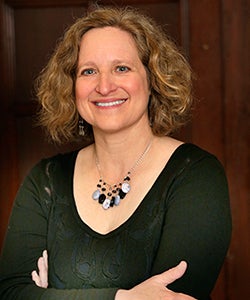For the past 15 years, America’s struggle to embrace pluralism has been amplified in the form of post-9/11 xenophobia, anger towards immigrants, and most recently, a presidential election in which religious minorities were openly ostracized.

Linda K. Wertheimer
Perhaps nowhere is this struggle more apparent than in public school classrooms, where teachers are often caught between their responsibilities to teach about religion and the possibility of community backlash for doing so. Many teachers often try to avoid or minimize the subject together, especially when it comes to religions such as Islam, Hinduism, and Buddhism. That avoidance can come at great cost for students, especially as more young Americans identify with diverse social circles in college and beyond.
To combat religious illiteracy and empower teachers in an age of intolerance, journalist Linda K. Wertheimer has traveled the country highlighting ways in which educators can respond to the challenges of an increasing diverse social landscape. Her book, Faith Ed: Teaching About Religion in an Age of Intolerance, serves as a go-to-guide for best practices and cautionary tales when teaching about religion in the classroom. In the book, Wertheimer highlights the backlash to a liberal suburban Boston school’s visit to a mosque, as well as the way Modesto, California - home to one of the country’s largest Sikh populations - has institutionalized teaching about world religions in its schools.
Wertheimer says many teachers simply don’t know their rights when it comes to teaching about religion, a problem exacerbated by administrators who might be just as unfamiliar on what can and can’t be taught. She notes that administrators (principals, curriculum supervisors) can help empower their teachers by getting them to better understand what they are able to do in the classroom. She says:
Administrators can make sure teachers understand the First Amendment and what it says about separation of church and state but also what the Constitution says about religious liberty. Teachers, as laid out very well in the 1963 Abington v. Schempp Supreme Court ruling, can teach about comparative religions. They can teach about the Bible as literature or history. They cannot promote one faith over another. They cannot lead students in prayer. Teachers need to understand where the lines are drawn. They should also be proactive in letting parents and students know why religion is on the curriculum. Some social studies coordinators, for example, send out letters ahead of time to let parents know religion is on the curriculum and that it will be taught as part of history and geography. They are careful to point out that this is education about religion. It is teaching, not preaching.
Echoing religious literacy advocates such as Charles Haynes of the Religious Freedom Center, Wertheimer notes that professional development for teachers on the First Amendment - as well as content about religions - can go a long way in easing teacher concerns.
Another issue many teachers have faced backlash over is whom they invite as guest speakers to represent a religious traditions. Often, teachers feel a “religious expert” is either a clergy member or a parent, and both options present both First Amendment and content challenges. As Wertheimer points out, “teachers have to tread carefully when inviting guest speakers to talk about religion in the classroom. The problem is, who can you invite as a ‘neutral’ speaker on a religion? If you invite clergy, will they feel compelled to promote their faith?”
She adds, “If you invite a parent, will he or she be knowledgeable enough to truly talk about a particular religion? It’s a problematic approach for many reasons. One pastor, one rabbi, one imam likely represents one particular branch of his or her religion.”
Wertheimer highlights several examples in her book, and the consequences of well-intentioned teachers inviting non-vetted speakers to her class. She often draws upon her own experiences as a Jewish-American growing up in Ohio, when she was subjected to classroom visits by a woman who extolled the virtues of Christianity.
While American classrooms have progressed in many ways, and schools are becoming more cognizant of cultural competency and religious literacy, Wertheimer argues that challenges remain. She points out that anti-Muslim sentiment, particularly in political discourse, can have an impact in schools, adding to teachers’ obstacles.
“The biggest challenge teachers likely will face is the rise in Islamophobia across America as rhetoric about “Islamic terrorists” increases,” she says. “Teachers may have students and parents who object to any education about Islam in particular. They may face parents who will take their complaints to the media and school board meetings for something as mundane as a bulletin board display about the history of Islam.”
As numerous educators note, Islamophobia can also impact the teaching of religions such as Hinduism, Sikhism, and Buddhism, since they are all framed as “Others.”
But even as these challenges emerge, Wertheimer believes teachers have a responsibility to be on the frontlines of promoting pluralism through informed pedagogy.
“Educators should be able to make a good case for more instruction about the world’s religions, not less, as a way of improving the atmosphere in schools and also reducing ignorance about religion,” she says.
If anything, today’s political climate can serve as a platform to push for religious literacy, in hopes that future generations won’t view understanding diverse faith traditions as such a polarizing subject.
For more resources, visit Linda K. Wertheimer’s web site at https://www.lindakwertheimer.com/
